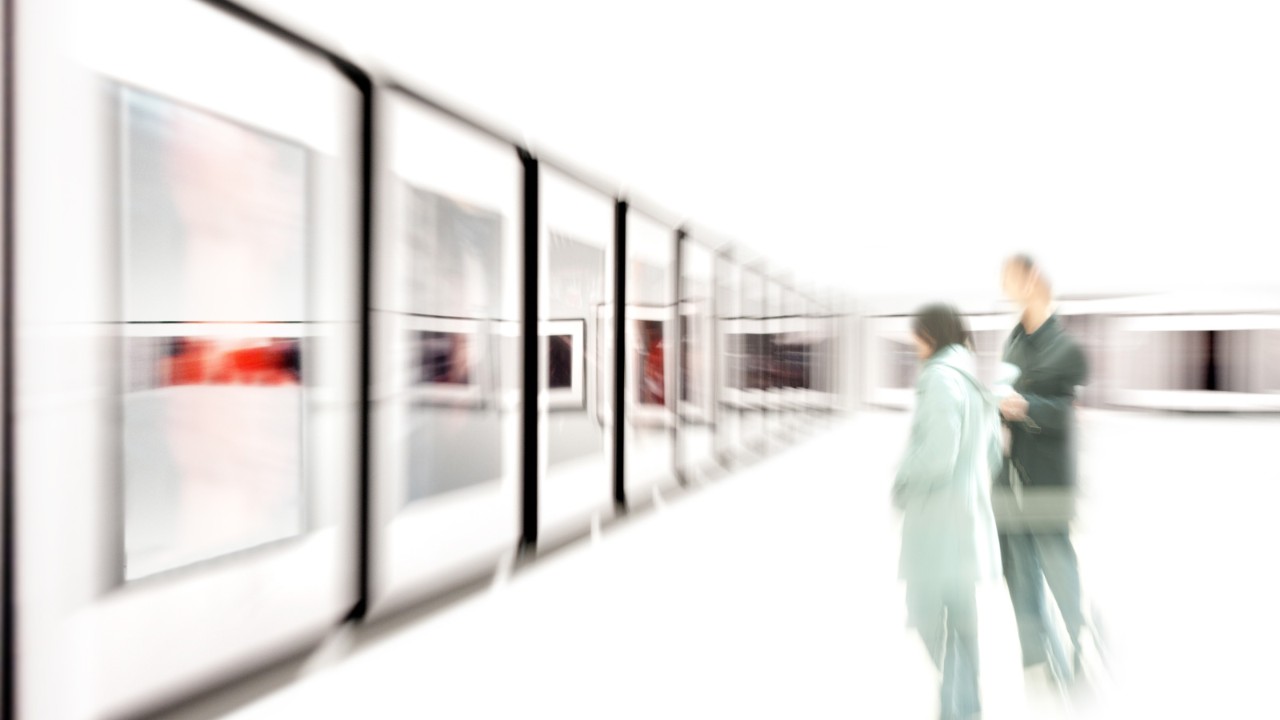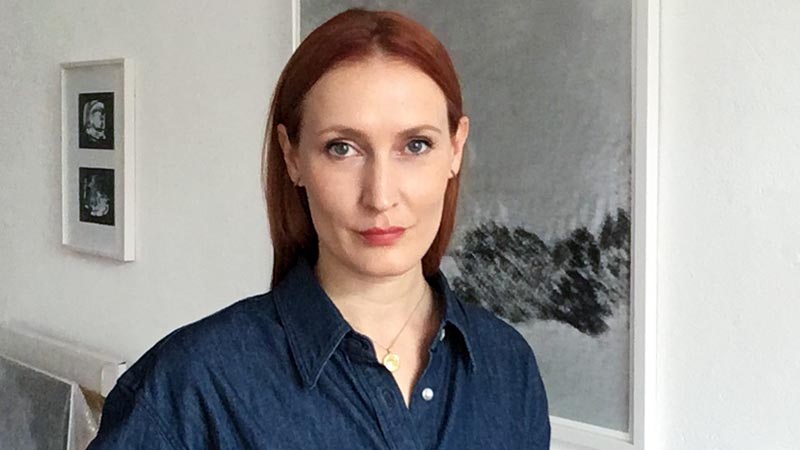Artificial intelligence (AI) has long since found its way into art. Machine learning was used to finish Schubert's unfinished symphony. And AI is generating new, exciting images. Artists and scientists argue over questions of creativity and authorship.

A strangely washed-out painting - the "Portrait of Edmond De Belamy" by the French artist collective Obvious - is considered the most successful piece of AI art in the world. It was sold at Christie`s auction house in October 2018 for a record $432,500. No AI painting after that achieved a similarly high price. "In the art world, the use of AI has given rise to a new movement that redefines creativity and authorship," Spiegel Online reported in late 2020, which shattered the notion "that creative design is a unique selling point of humans."
Artist Ornella Fieres (photocredits: Marcus Schneider) also used AI for the first time in 2020. She was born in Frankfurt/Main in 1984 and lives in Berlin and New York. "In my work I use different digital technologies to transform found historical visual, textual and audio material," she explains. "The goal is to use digital signals to translate historical material into the now and observe what happens when the information is transformed."

But what does fascinate her about AI? "I'm particularly interested in the invisible and hidden processes in the machine - all the things I can't see and have little control over." For her solo exhibitions in New York and Berlin, Fieres used AI to make more than 700 documents from an estate readable and transformable. "In the estate bundle were hundreds of letters that I couldn't decipher because of the illegible old handwriting. I first looked for something to help me make what I had written legible. I eventually came across a 'Document Understanding Tool' and researched other ways to transform the mass of information from the collection in different ways."
What she finds exciting is "the potentially autonomous nature of AI. The idea that it evolves without human intervention and grows and spreads like an organism". Fieres is currently pursuing a doctorate at the Offenbach University of Art and Design on the topic of "The Occult Digital." This involves the hidden, mysterious aspects of digital technology. "Of course, artificial intelligence is a big part of that," the artist finds.
Given the increased use of AI in art, one gets the impression that it could be a fashionable topic. Fieres agrees: "The subject of AI is very popular at the moment, which brings with it the fear that it will become uninteresting for art. However, I use it for the same reason I use other digital automatisms like algorithms: to investigate the invisible, autonomous in the digital."

One of her works shows the AI making a mistake in describing an image. "However, I see it as simply recognizing something different than we humans do because of its learning processes." Fieres is concerned with showing "that things happen inside the machine that I can't influence. It acts autonomously - and I don't correct it."
When AI is used in art, the question of authorship and the source of creative output quickly arises: "If the human specifies the algorithm, but the AI creates the image, who is then the artist?" asks, for example, Spiegel reporter Carola Padtberg.
There have already been studies on the subject, asking who is the creator of a work of art when AI is used: the artist or the AI. Fieres sees it this way: "When it comes to the author issue, I'm primarily interested in the idea that the machine is seen as creating and creative. I use different digital mechanisms to create my works. For this, I develop concepts, decide what technology to use and how, what input to give, what output to choose, and: how production and installation are implemented. Nevertheless, AI or any other digital technology is a big part of this process."
Marc-André Weibezahn also uses AI. The Leipzig-based digital artist used machine learning as a tool in his latest project, Affine Tuning (see video below).
It's about interactive music: "A smartphone app translates movements of the player into musical feedback," explains Weibezahn, who gives workshops and lectures at the Kunsthochschule Bremen. "Depending on how you move in front of the smartphone camera, the piece changes. For me, this is experimental entertainment. Not a video game, but in terms of approach and simplicity, it goes in that direction." AI interests him as a tool, he says, because it now fits even into the small form factor of a smartphone.
Weibezahn's first contact with AI was on the subject of style transfers: "The idea is to represent an image in the visual style of another artist. A selfie in the style of a Van Gogh painting, for example. That was my first point of contact."
Since then, Weibezahn believes AI in art has also made her a fashionable subject: "AI as a subject, but also tracking, facial analysis, or the making of new images by computers, has achieved a certain prominence in recent years." However, AI has come to stay, he says: "The focus will change depending on what's current."
For Weibezahn, artificially generated images have their own aesthetic quality that can be compared to a painting technique. What bothers him about AI is that there are still limits, noise in the data and misinterpretations. "They are always just approximations. Depending on how well an algorithm has been trained, it can do some things well - but other things not so well. With that, some things just don't work yet, such as recognizing fine details in low light."
On the discussion of whether AI itself can be creative and the author of a work of art - or whether those who train the algorithm do the creative work and the program merely executes it - Weibezahn comments as follows: "What do we mean by creativity? Is it creative when a program performs complex calculations? Can creativity be expressed in numbers? In a painter who puts a painting on canvas, the creative act also consists of a selection process. In the artist, decisions and intuition have matured - and they are not the same in anyone. Can you compare that to a machine that spits out the same result every time?"
Weibezahn doesn't see it that way: "An artist is like a kind of catalyst; he absorbs, lives his life, is subject to influences from everywhere, and has social relationships with other people. That all flows into the artistic selection process. But a computer program, at least today, does not have these interfaces. How is a computer or a program supposed to know what moves people?" Art that deals with social or political aspects will not come out of computers in the future, he adds.
Text: Helge Denker (www.helgedenker.de)
Most popular